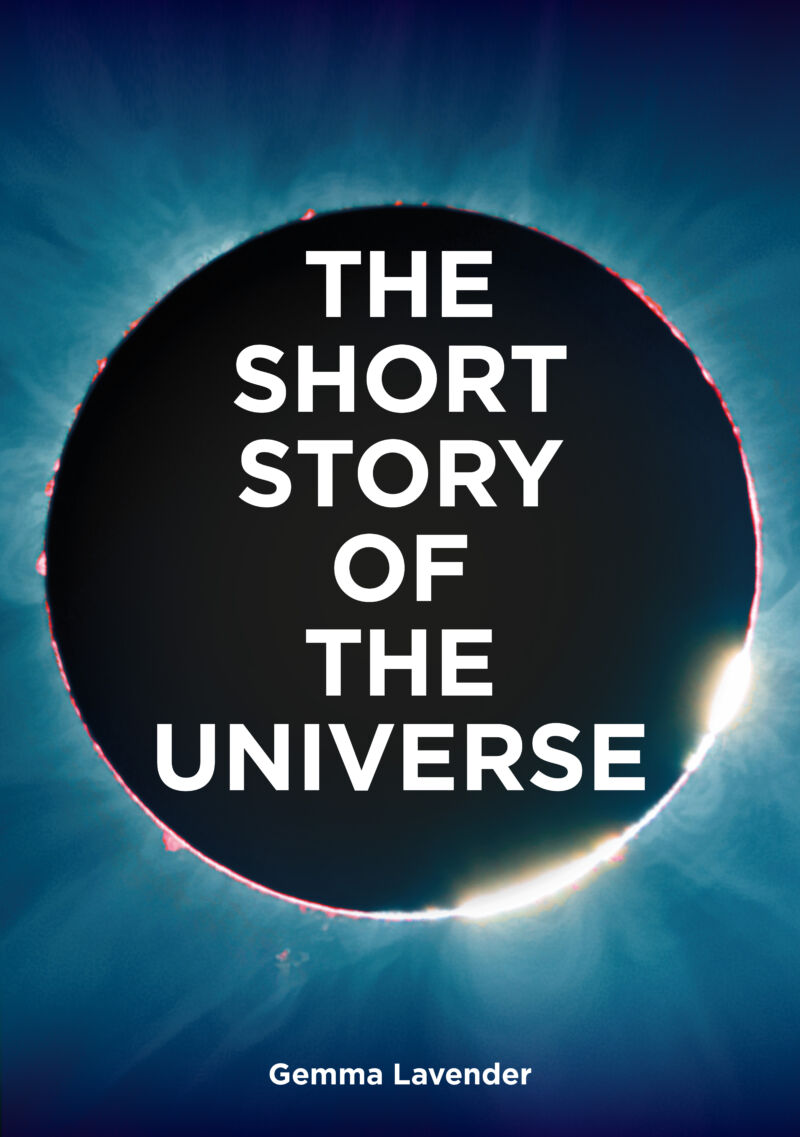
If the spectacular images from the NASA James Webb Space Telescope have you hankering to learn more about what’s Out There—or at least to see more pretty pictures of it—The Short Story of the Universe arrives just in time to sate your craving.
Like all of the books in the Short Story of... series, Gemma Lavender's The Short Story of the Universe (Amazon, Bookshop) is organized into four cross-referenced sections. First is Structure, which begins with the Universe and ends with subatomic particles. Next is History and Future. It begins “Before the Beginning” (the "beginning" being the Big Bang, T=0, 13.8 billion years ago) and ends with “The Fate of the Universe” at T > 10100 years.
The shape of that future depends on how dark energy behaves. If dark energy weakens over time, “it may cause gravity to lead the Universe slowly to contract back on itself in a Big Crunch.” Alternatively, if dark energy strengthens or even stays the same over time, the Universe will just keep on expanding forever until either all matter entropically decays into radiation or the fabric of space-time gets torn in a Big Rip. We don’t know which path dark energy will take because we don’t yet know what dark energy is.
The Components section is the largest by far, covering the nine types of galaxies, the fourteen types of stars/stages in star evolution, and plenty of other luminous and non-luminous objects that populate the known Universe. Each component gets its own double-page spread, with an explanation and a stunning image—a photo or composite photo, an artist’s rendition, or a computer simulation. Earth and Mars are special; they each get two such double-page spreads. Saturn gets just one, but Saturn’s Rings get a separate one. And the dwarf planet of Pluto has to share its spread with its satellite Charon.
The last section is Theories. About a third of these already made an appearance in The Short Story of Science, but a review is always nice.
All of the pages in the book contain a profile of the scientist(s) instrumental to the theory (or component, or structure) being described. The book is rife with phrases stressing the iconoclastic nature of the scientists—or possibly the dogmatism of the world around them—before their ultimate redemption. “Although initially ridiculed, Chladni’s work inspired a more thorough investigation of fireball sightings that ultimately confirmed his ideas,” one says.
“Daly’s theory [the Moon originated in a giant impact, first proposed in 1946] went unnoticed until the post-Apollo era, when geologists realized it could help to explain similarities and differences between Earth rocks and Moon rocks,” reads another example. Another: “Wegener’s theory [the Earth’s crust is broken into slow-moving plates, first proposed in 1912] was neglected until the 1950s, when explorers found signs of new crust forming on the deep ocean floor.” If this level of condensation seems like a bit much, this book may not be for you.
“The Universe is everything around us; it is the entirety of existence,” the book begins. “The Universe is old… And the Universe is huge.” So telling this short story is no small task. But Lavender has been an astronomer and author for decades and is a great tour guide to the cosmos, whose beauty and majesty we are finally able to observe.
Ars Technica may earn compensation for sales from links on this post through affiliate programs.
reader comments
54